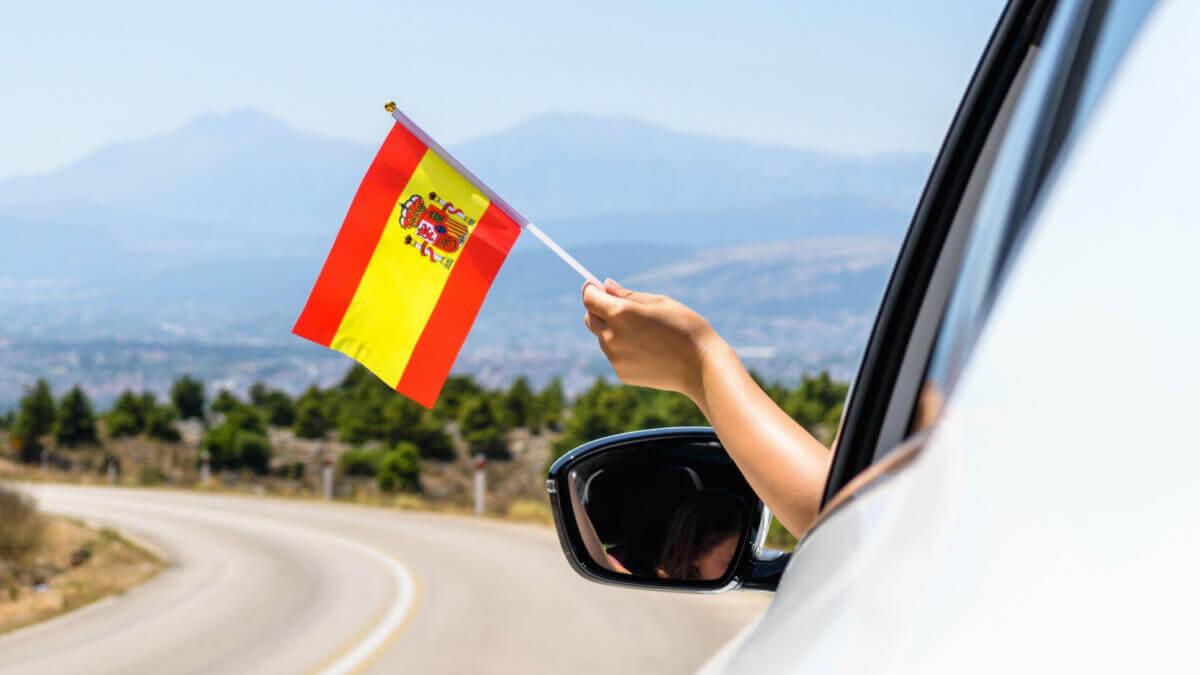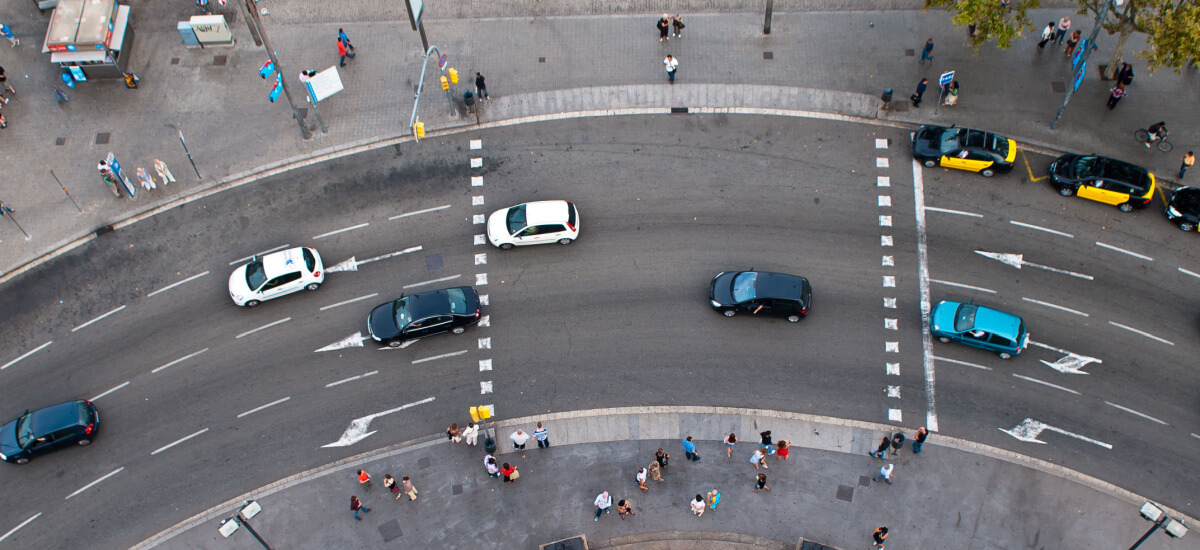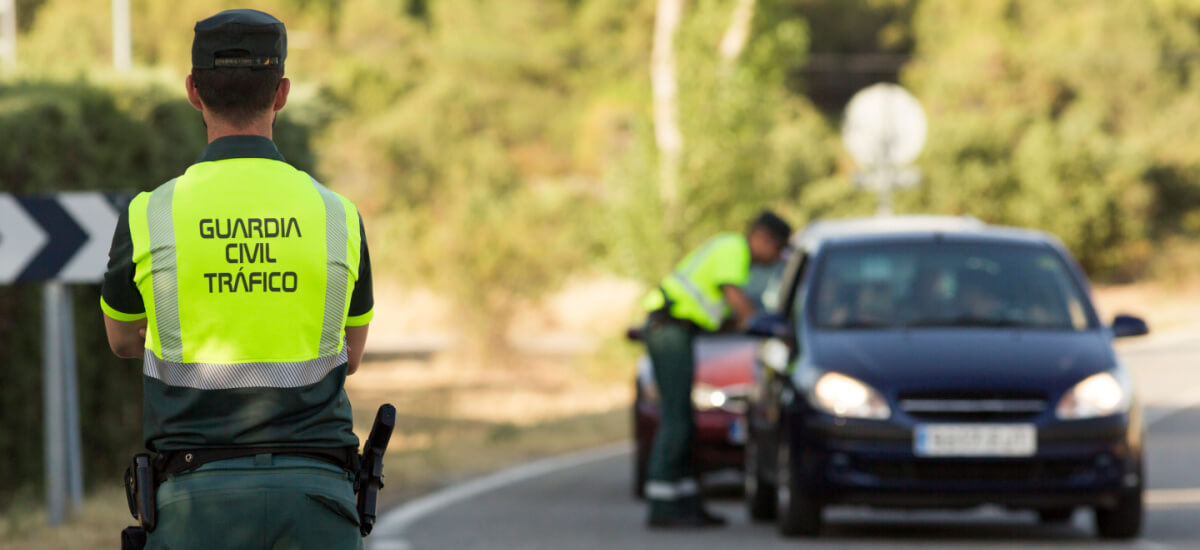Do you need a visa to visit Spain from the UK: Spain travel requirements
Planning a trip and wondering about the visa to Spain from the UK? Learn whether you need a visa, the different visa types and how to apply.

Dreaming about a road trip through sun-soaked Spain? Even moving there permanently? Besides reading up on the sights you want to visit, part of your planning should include your time behind the wheel. In order to truly be able to enjoy everything, you want to be sure you’re fully prepared and safe.
In this guide, we’ll tell you all you need to know about driving in Spain. This includes driving laws and rules in Spain, the status of your UK driving licence and the requirements drivers must meet.
We’ll also show you a cost-effective way to handle your finances across borders from the money services provider Wise. The Wise account allows you to send and receive money between the UK and Spain. You can even rely on the Wise card to help you handle all of your driving-related expenses abroad while avoiding high currency exchange fees.
Please see the Terms of Use for your region or visit Wise fees & pricing for the most up-to-date information on pricing and fees.
Read on to find out what you can expect from exploring Spain on wheels.
| Table of contents |
|---|
Both visitors and residents must be at least 18 in order to drive through Spain. In addition to your valid driving licence, there are some other documents you should carry with you at all times. First, your passport as proof of ID. Make sure you also have your V5 registration document and proof of insurance.¹
If you’re going to be driving your UK registered car in Spain, it needs to have a visible UK sticker on the back. Even if you already have a GB sticker from a past trip, you need to exchange it for a UK one. Having a UK flag on your licence plates won’t be enough for Spanish authorities either.¹
Nationals driving through Madrid and Barcelona need stickers that indicate their car’s emission levels. However, if you’re driving your UK car, this won’t be necessary. Also, keep in mind that you can legally drive your UK vehicle on Spanish territory for up to 6 months of the year.²
Besides the mentioned documents, you need to carry certain items in your vehicle to avoid getting fined. You’ll need to have reflective jackets and one warning triangle. You’ll be using these in case you have to leave your car on a carriageway. Only one triangle is enough for visitors, but residents need to carry two.² Also add headlamp beam deflectors to the list, since you’ll be driving on the right side of the road. If you don’t have them, you can adjust the beam manually instead. All of these items can be found in specialised driving kits.¹
Older drivers who plan to stay permanently and perhaps retire in Spain will need to renew their licence more frequently than others. Starting from the age of 65, you must undergo certain medical checkups every 5 years, to determine you’re still healthy enough to drive. The good news is once you turn 70, you won’t have to pay licence renewal fees, only the medical examination.³
Yes, Spain recognises UK driving licences, so if you’re just visiting, you won’t have any issues. However, if you plan on moving to Spain and staying there long-term, you’ll have to exchange it for a Spanish one.⁴
The exchange process differs based on where your documents were issued. If your driving licence was issued in the UK or Gibraltar, you must exchange it for a Spanish licence 6 months into your residency. But, if your licence was issued by Jersey, Guernsey or the Isle of Man, that won’t be possible. Instead, you’ll be treated the same as any non-EU national. This includes having to take a theory and practical driving test from scratch.⁴
Also, you won’t be able to use your International Driving Permit to avoid getting a Spanish licence.⁴

We know the requirements and the rules can be overwhelming, to say the least. So, here’s everything to remember about driving in Spain checklist-style:
Instead of getting all the required safety items individually, it’s more convenient to get them in a bundle. You can get good driving kits for Spain with two warning triangles from motoring companies such as RAC.
| 📚 Read more: Best debit card to use abroad: Top 6 UK picks |
|---|
You’ll be happy to know that many driving rules are exactly the same in the UK and Spain. Still, you should get familiar with all of their regulations and some of the key differences.
The main difference between the UK and most of Europe is the side of the road used for driving. In Spain, everyone drives on the right side of the road and the steering wheel is on the left. This affects some other rules, as well.
When driving in Spain, keep in mind that traffic within the roundabout has priority. You must wait and give way to the cars inside it when trying to enter.
At intersections, vehicles to your right have the right of way. These rules apply to all roundabouts and intersections, unless there’s a sign saying otherwise.
Another thing to get used to when driving in Spain is overtaking on the left side. Make sure you always show your indicators and return safely to your lane. Also, look at the lines on the road. If the line is white and solid, overtaking is forbidden.
When it comes to passing other cars, it’s not allowed in a couple of situations. Some of them are being 100m away from a blind hill or driving in low visibility conditions.
If sounding the horn is your preferred way of communicating in traffic, you might want to try getting rid of that habit. In Spain, horns are used only in cases of emergency, when there’s no other way to warn other drivers. Flashing your lights is a much better option.

It’s strictly forbidden to use headphones while driving in Spain. However, hands-free devices are legal and safe to use. If you break this rule, you risk getting a 200 EUR fine.
The speed rules in Spain are fairly strict and the fees for breaking them can be up to 600 EUR. In some cases, you even risk getting your licence suspended for years.
The speed limit for residential areas is only 20 km/h, while it’s set at 50 km/h for built-up areas. It’s not unusual to see flashing amber lights when you’re getting close to a city. This serves as a warning to lower your speed to 50 km/h.
Outside built-up areas allow for 90 to 100 km/h and motorways for 120 km/h. The only time you’re allowed to exceed this is when overtaking outside built-up areas. Radars and traffic light cameras are often used in Spain, which is a reason to pay extra attention.
While you should never drink and drive, it’s good to know the exact amount of blood alcohol allowed in Spain. The legal limit for Spanish drivers is the same as it is in Scotland, 0.05%. If you have less than two years of driving experience, the bar for you is 0.03%.
The Spanish traffic police have the right to ask you to take a breath test if they suspect you’ve been drinking. Tests are also always done in case of traffic accidents.
Need help managing your driving expenses in Spain? You might want to consider options other than your bank.
Wise is a money services provider specialising in international transfers, along with a powerful multi-currency account and international debit card.
Open a Wise account and you can manage your money in 40+ currencies, including GBP and EUR. You can also make international payments for low fees* and mid-market exchange rates.
You can also get a Wise card and spend like a local from the moment you arrive in Spain. The Wise card has no foreign transaction fees for spending abroad, just a small conversion fee* when spending cross currency, so paying for gas or car repairs won’t break the bank. It also allows you to withdraw up to £200 per month with up to 2 transactions from overseas ATMs with no Wise fees (although ATM operators may charge their own fees).
Sources used for this article:
Sources last checked on: 31-Oct-2023
*Please see terms of use and product availability for your region or visit Wise fees and pricing for the most up to date pricing and fee information.
This publication is provided for general information purposes and does not constitute legal, tax or other professional advice from Wise Payments Limited or its subsidiaries and its affiliates, and it is not intended as a substitute for obtaining advice from a financial advisor or any other professional.
We make no representations, warranties or guarantees, whether expressed or implied, that the content in the publication is accurate, complete or up to date.

Planning a trip and wondering about the visa to Spain from the UK? Learn whether you need a visa, the different visa types and how to apply.

Should you pay with cash or card in Spain? A handy guide including cash etiquette, Spanish ATMs and using your UK card.

Planning a trip to Spain from the UK? This travel guide covers everything from entry requirements and safety tips to managing your money and local laws.

Travelling to Spain and need cash? Our guide to ATMs in Spain, will help you locate them, explain fees, exchange rates, withdrawal limits and more.

Are you applying for a Spanish visa from the UK? Here's what you need to know, plus how to save on fees and avoid bad exchange rates with Wise.

Read our essential guide to using Amex in Spain, including fees, exchange rates, tips and where American Express is accepted in Spain.